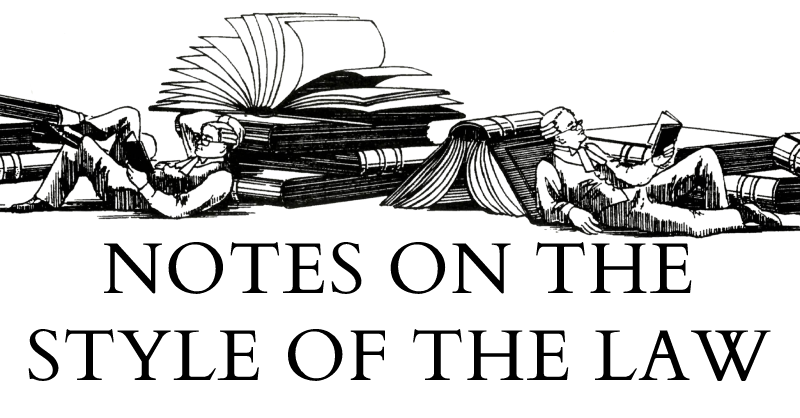

The citation of amended Acts is normally straightforward. We normally refer, quite straightforwardly, to an amended Act by the short title of the original Act, and, in most cases, we need never even refer to the amending Act. Excepting historical analysis and other cases where legislative history matters. In particular, where a subsequent amending Act shares a name (but not a year) with the earlier Act, there is no need to pluralise the title and add a second year. So, for instance, we may refer simply to the Theft Act 1968, rather than the Theft Acts 1968–1996, despite the Theft Act 1968, Theft Act 1978, and Theft (Amendment) Act 1996.
The clear exception to this is the Parliament Acts 1911 & 1949, which are referred to together as plural enactments, even though almost all the substantive provisions are to be found in the Parliament Act 1911, as amended. For discussion on when to use ‘as amended’, see ‘Amending Amendments’, Note of 28 Sep 2023.. A person seeking to know when legislation may be enacted without the advice and consent and authority of the House of Lords need only read the consolidated Parliament Act 1911. For the sake of completeness, there is a substantive provision in the Parliament Act 1949, s 1 (beginning with the word ‘provided’), but this provision is spent as it refers only to the session in which the 1949 Act received Royal Assent.
The logical conclusion would be that one need only refer to the consolidated Parliament Act 1911. Section 8 of that Act is clear on how to cite it: ‘This Act may be cited as the Parliament Act 1911.’ It would seem that the widespread reference to ‘the Parliament Acts’ is a solecism, done by people who have not bothered to read the plain language of section 8 of the 1911 Act. I have indeed seen some online commentators, whom I shall not name, arrive at just such a conclusion.
There is, however, just one problem. The Parliament Act 1949 has only two sections. The first section amends the 1911 Act. The second section provides two subsections. The first provides for the citation of the 1949 Act in the expected way (the Parliament Act 1949). Strictly speaking, it provides for it to be cited as ‘the Palriament Act, 1949’ with a comma between the title and year, which was then the standard. There is some debate about whether the will of our Sovereign to use commas in such places requires us to use commas for all Acts that used commas in their short titles, but for the sake of consistency and without prejudice to any future conclusions I may come to on this matter, I use the modern version without the comma in this Note. The second subsection has two effects. One of these is to amend the enacting formula for bills passed enacted only with the Commons to read ‘in accordance with the provisions of the Parliament Acts 1911 and 1949’, rather than just ‘the Parliament Act 1911’. Oddly, due to either an error or some editorial policy which eludes me, the online legislation.gov.uk version of the 1949 Act omits this language and adds a footnote to the 1911 Act. I think this is probably just a mistake, but it may be that some abstruse good reason exists for truncating the statute so. The other, which occurs first in the subsection, is more unusual today (although such clauses were once relatively common—see, for instance, the Law of Property (Joint Tenants) Act 1964, s 4):
(2) This Act and the Parliament Act 1911, shall be construed as one and may be cited together as the Parliament Acts 1911 and 1949 […]
Thus, although the online legislation.gov.uk consolidation of the 1911 Act makes no mention of this, the 1949 Act, s 2(2) requires that we treat the 1949 and 1911 Acts as a single body to be cited as one. Other than for historical points (eg, discussing the circumstances of the passage of the 1949 Act), our Sovereign has clearly dictated that we are to act distinctly with these two Acts. Whereas normally we would simply cite the Parliament Act 1911, we must instead treat it as two Acts formed into a single body, and cite it in the plural. It would be helpful if the legislation.gov.uk team would note this in some kind of special note on the 1911 Act, s 8, since otherwise people may come away being misled into thinking that it is a brilliant pedantic point to cite the Act as the Parliament Act 1911 in accordance with s 8. The dual citation formula specified by the 1949 Act is not ideal, but one of the quirks (or perhaps, features) of parliamentary sovereignty is that our Sovereign, the Crown-in-Parliament, can tell us to cite Acts in any way it likes, even silly ones.

© 2024, 2 Car III, Elijah Z Granet, but licensed to all under the terms of Creative Commons licence
CC-BY-SA 4.0
Published by

GRANET PRESS
LIMITED



Comments
Post a Comment
Contributions are always welcome!